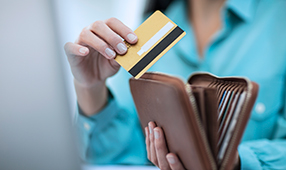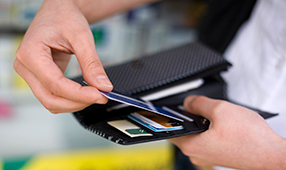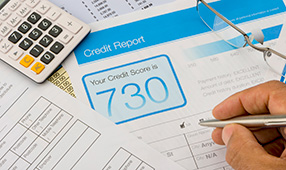Stacy warily eyed the stack of envelopes on her kitchen table. She was swimming in credit card offers, each sounding better than the next. Zero APR! Cash bonus! No annual fee! Unlimited cash back! Free FICO® Score access! She called her fellow teacher Gail and lamented, “How do I know which card is right for me?”
The sheer number of credit card issuers coupled with a complex array of special offers, features, fees and fine print makes shopping for a new credit card a daunting task. For example, creditcards.com lists nearly 50 cash back cards and another 50 travel cards. And those are just two of more than a dozen card categories on the site.
Before you start comparing offers, there are four questions to answer:
- What is your credit score? The higher your FICO® Score, the more likely you are to be approved for a card at the best interest rate and terms.
- How will you use the card? Will it be for personal or business use? Everyday purchases or just for emergencies? Only for purchases in the U.S. or will you also use it overseas?
- What are your priority card features? Do you want the lowest interest rate? No annual fee? A high credit limit? Rewards, such as cash back or travel miles?
- Will you pay your balance in full each month? The answer to this one determines whether you focus on low interest rate cards.
Once you have answers to the four questions, you’re ready to go comparison card shopping. Here are several important things to review.
Interest rates (APRs)
Credit card APRs (Annual Percentage Rates) vary depending on the type of card. Rewards cards tend to charge higher APRs to help pay for the rewards perks. Most cards will have a range of APRs with the lowest rates offered to applicants with the best credit scores.
Many cards offer an introductory 0% APR on purchases and balance transfers for a period of several months as an enticement to apply. Pay attention to what the APR will be once the introductory rate expires.
A cash advance is a riskier transaction for the card issuer so they tend to charge higher APRs for these transactions.
Cards also have penalty rates, or default rates. This is the rate you’ll pay if you fail to make payments on time or go over your credit limit by a certain amount. Penalty rates can be significantly higher than the normal APR—upwards of 30% on many cards. Often, these rate bumps are permanent. You don’t want to fall into penalty rate land. If you always pay your purchase balance in full by the due date, you will not incur interest charges.
A card like the NEA® Customized Cash Rewards Credit Card offers competitive APRs, along with the added benefit of cash rewards for everyday purchases, making it a strong choice for teachers who plan to use their card for both classroom and personal expenses.
Fees
Credit card issuers are in business to make a profit. One way they do that is to charge fees to card users. A few of the most common credit card fees include:
- Late payment fee. If you are as little as one day late in making your payment, you could be charged a late payment fee of $25-$35.
- Annual fee. This is a fee you pay for the privilege of having the card. The more perks a card offers, the more likely it will carry an annual fee.
- Cash advance fee. Some cards allow you to get a cash advance through an ATM or bank branch. You’ll pay an immediate fee, the interest rate will be higher than the rate for purchases, and the interest will begin being charged immediately—no grace period!
- Foreign transaction fee. This is a percentage based fee—generally 3%-4%—on charges made outside the U.S. If you travel, look for a card with no foreign transaction fees.
Billing cycles and grace periods
A credit card billing cycle is the approximately one-month period between billing statements. Any balance left on your account at the end of a billing cycle will carry over to the next billing cycle (and you’ll be charged interest daily on that amount).
The grace period is the gap between the end of the billing cycle and the date a payment is due—generally about 21 days after the cycle end date. If you charge purchases right after the end of a billing cycle, those charges will appear on your next billing cycle approximately a month later. And your payment due date may be 21 days or so after the close of that cycle. This allows you to postpone paying for those purchases for up to 40 days or so. If you pay your balance in full and on time, this amounts to an interest-free short-term loan.
Benefits and perks
A rewards card allows you to earn points for purchases at certain retailers, such as restaurants or gas stations. Rewards points may be redeemable for travel, merchandise, charitable contributions or cash.
Teachers, in particular, can benefit from cards like the NEA® Customized Cash Rewards Credit Card, which allows users to earn 6% cash back for the first year (3% cash back + 3% first year cash back) in a category of their choice, including online shopping. This is especially useful for teachers who spend their own money on school supplies or other classroom needs, turning everyday purchases into valuable rewards. Additionally, with a bonus offer, it’s a card that can help meet the personal and professional needs of teachers.
Other perks to look for include price and purchase protection, which will reimburse you if covered items go on sale or are damaged or stolen, car rental and travel insurance, trip interruption protection and lost baggage protection.
There are countless websites devoted to comparing card offers, including Nerdwallet, Credit Karma, creditcards.com, and Mint, among others. Keep in mind that these comparison sites earn a fee for cards they list, and no one site will list all card offers available. You’ll need to visit several of them to get a comprehensive view. Also, understand that a site might receive additional compensation for placing cards at or near the top of their list. Once you find the card that has everything you want, you can apply right from the comparison site.












